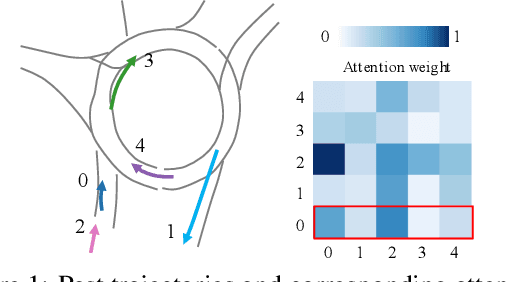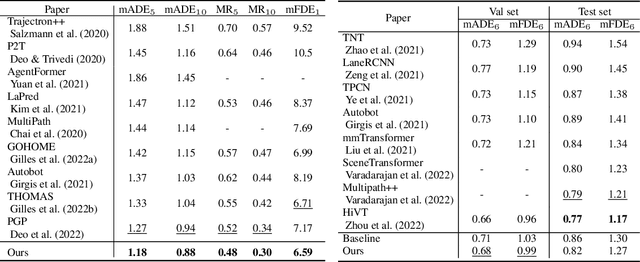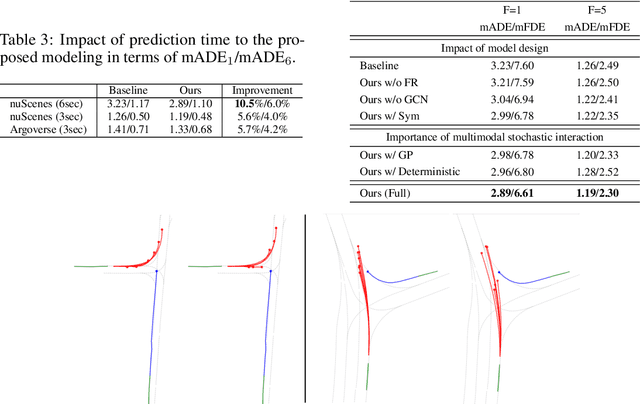Leveraging Future Relationship Reasoning for Vehicle Trajectory Prediction
Paper and Code
May 24, 2023



Understanding the interaction between multiple agents is crucial for realistic vehicle trajectory prediction. Existing methods have attempted to infer the interaction from the observed past trajectories of agents using pooling, attention, or graph-based methods, which rely on a deterministic approach. However, these methods can fail under complex road structures, as they cannot predict various interactions that may occur in the future. In this paper, we propose a novel approach that uses lane information to predict a stochastic future relationship among agents. To obtain a coarse future motion of agents, our method first predicts the probability of lane-level waypoint occupancy of vehicles. We then utilize the temporal probability of passing adjacent lanes for each agent pair, assuming that agents passing adjacent lanes will highly interact. We also model the interaction using a probabilistic distribution, which allows for multiple possible future interactions. The distribution is learned from the posterior distribution of interaction obtained from ground truth future trajectories. We validate our method on popular trajectory prediction datasets: nuScenes and Argoverse. The results show that the proposed method brings remarkable performance gain in prediction accuracy, and achieves state-of-the-art performance in long-term prediction benchmark dataset.
 Add to Chrome
Add to Chrome Add to Firefox
Add to Firefox Add to Edge
Add to Edge